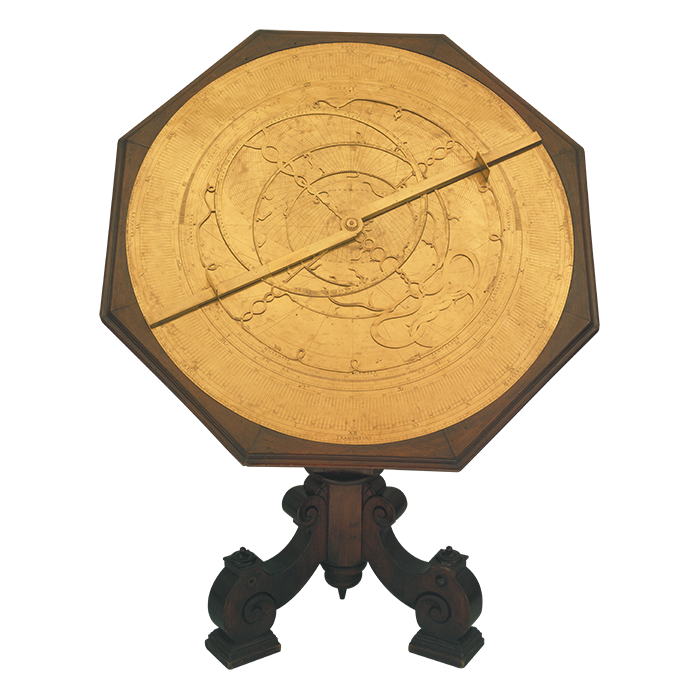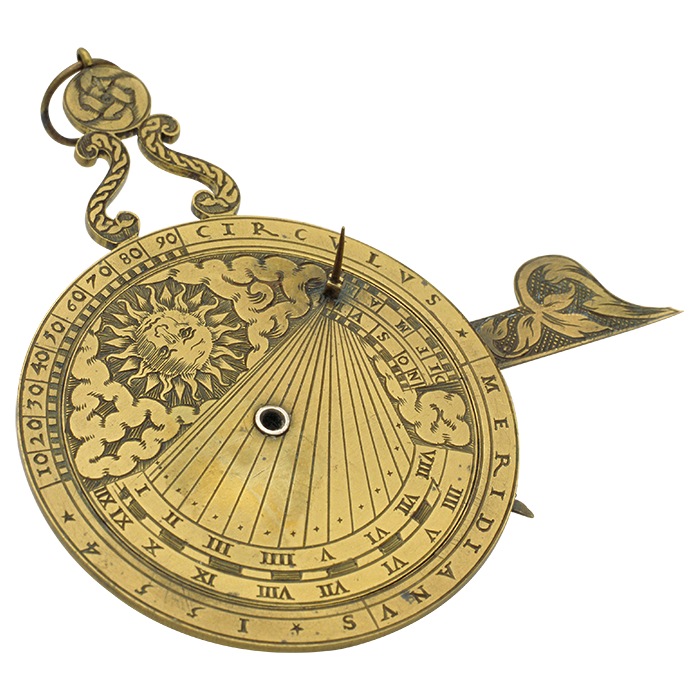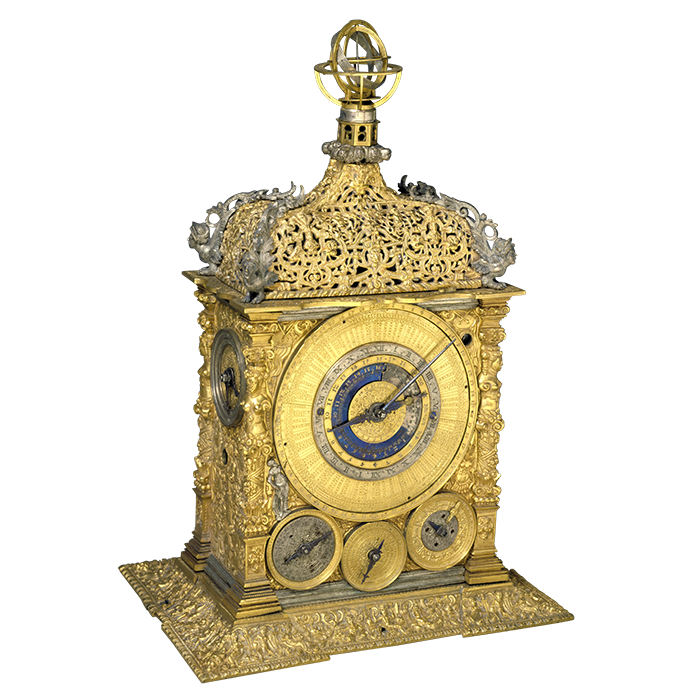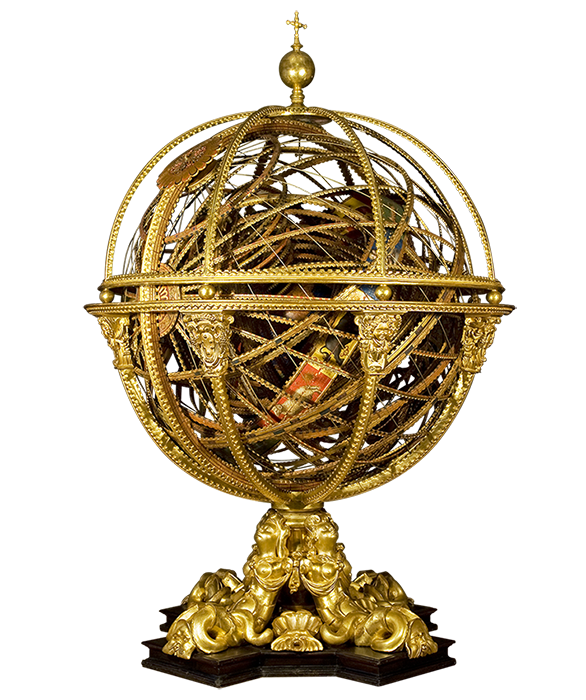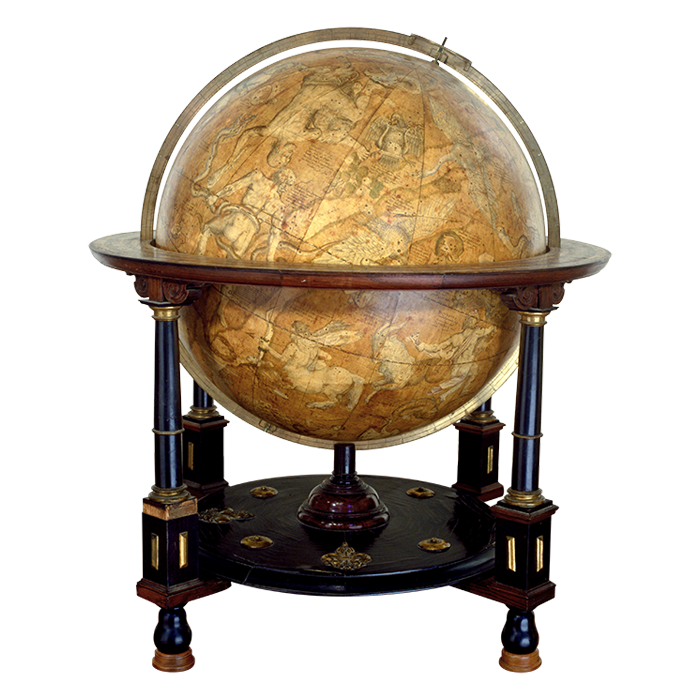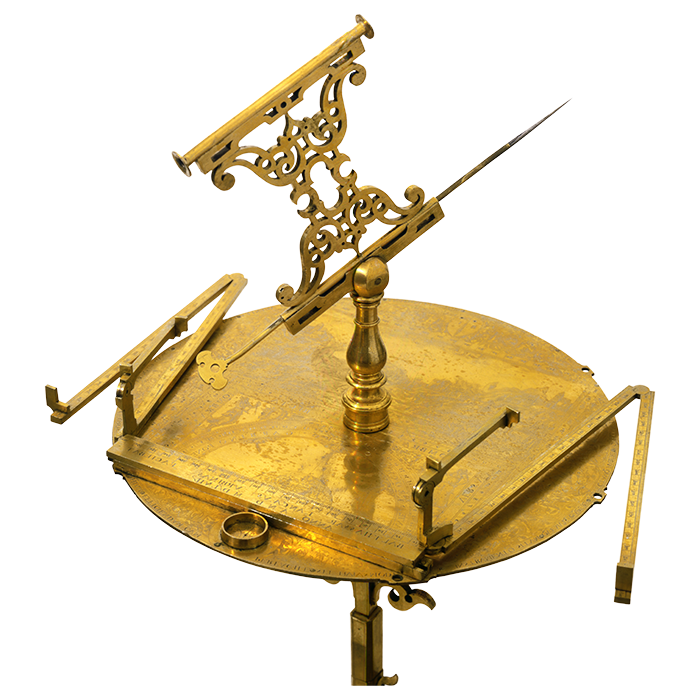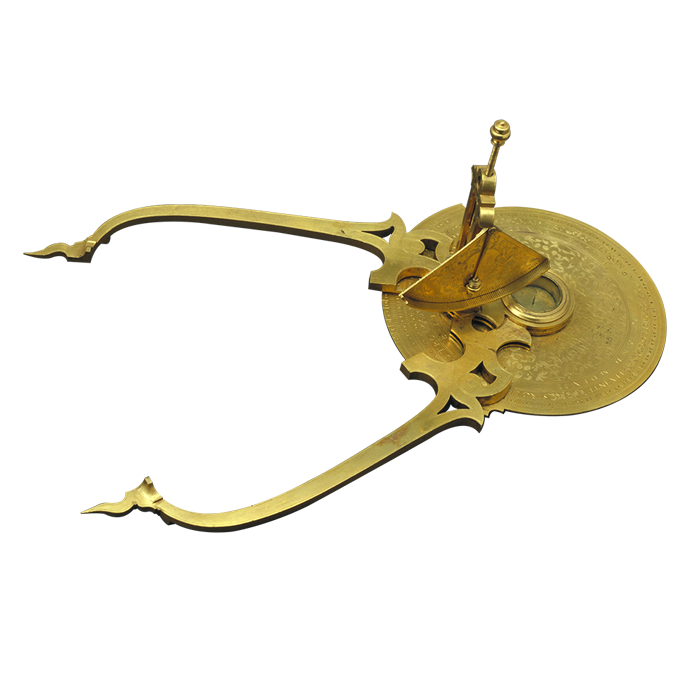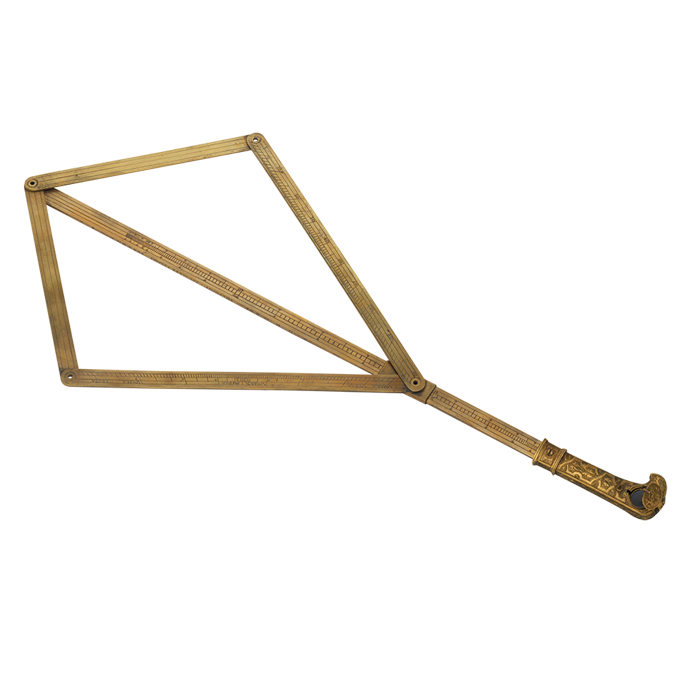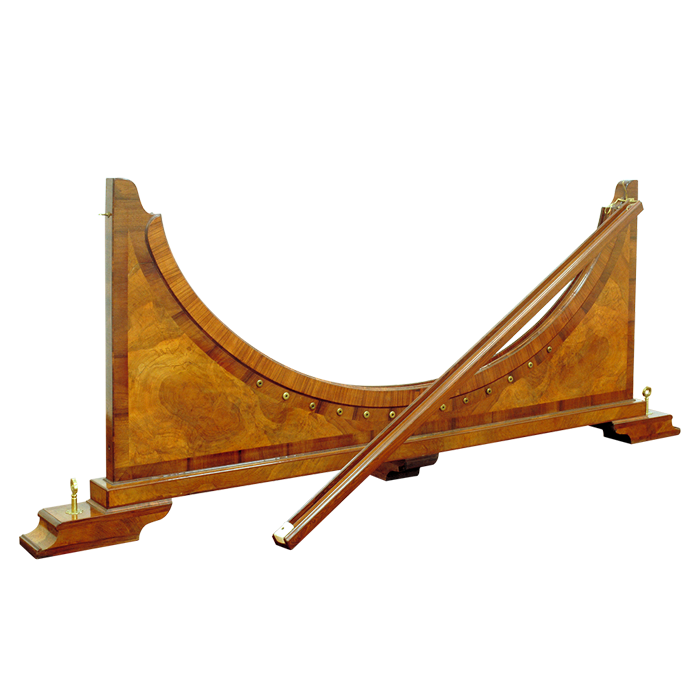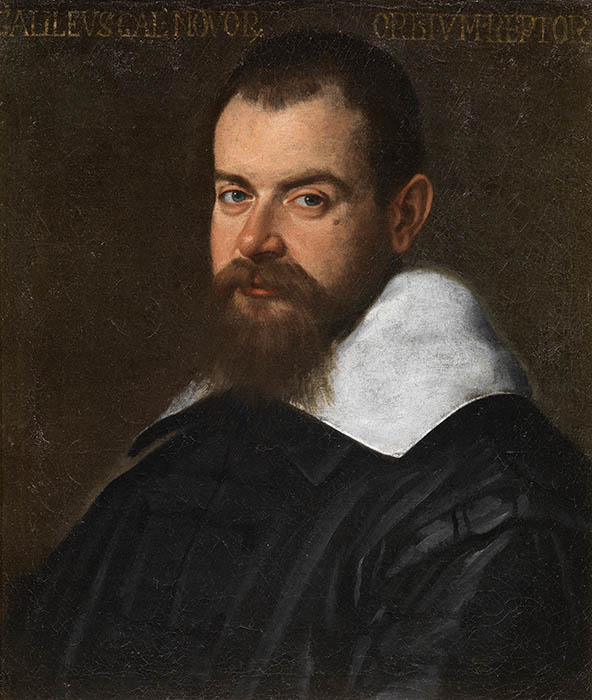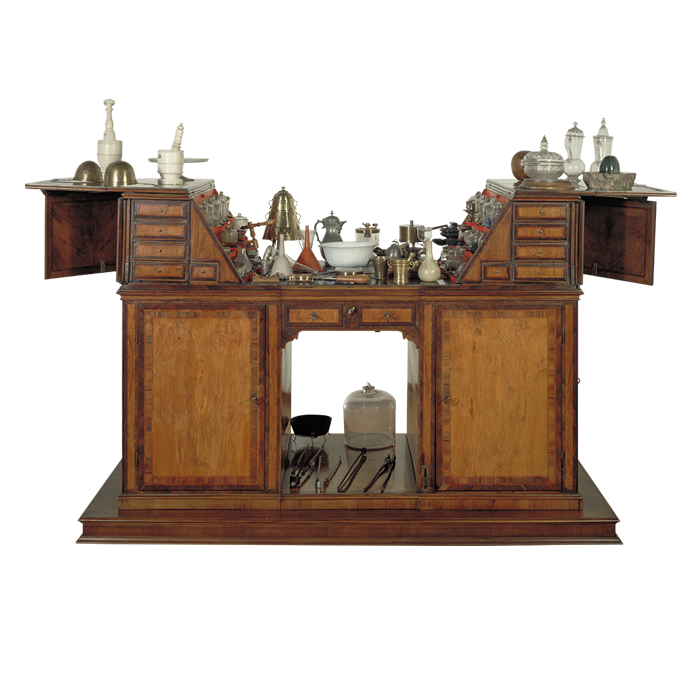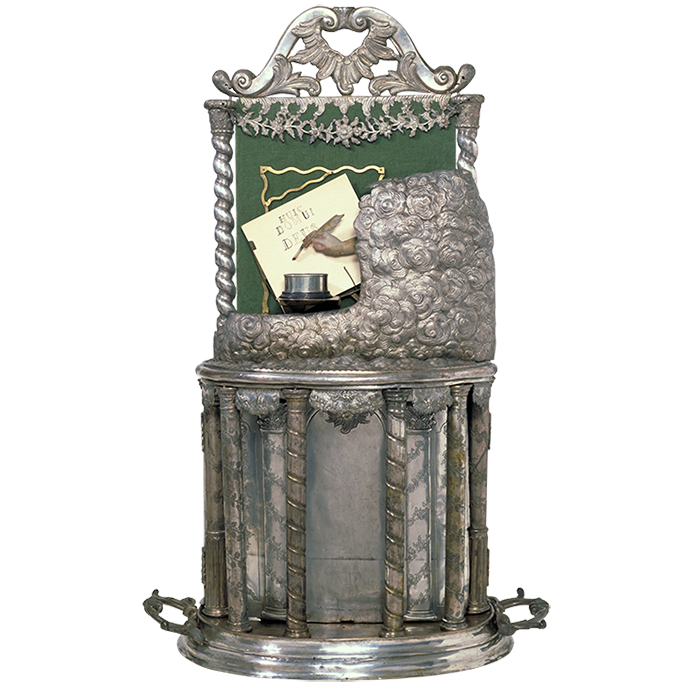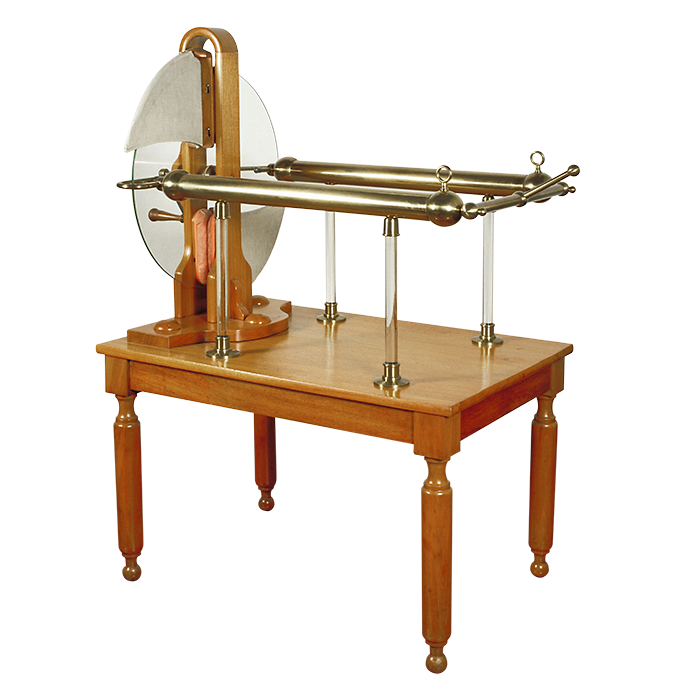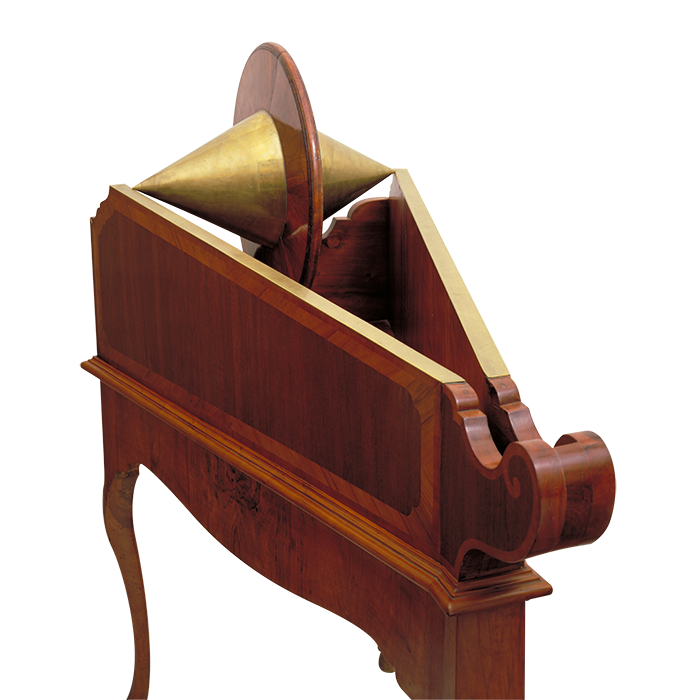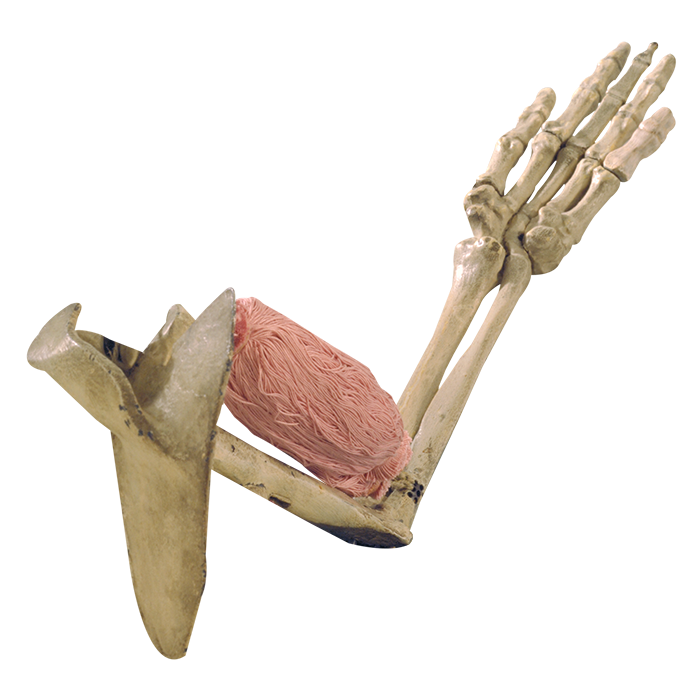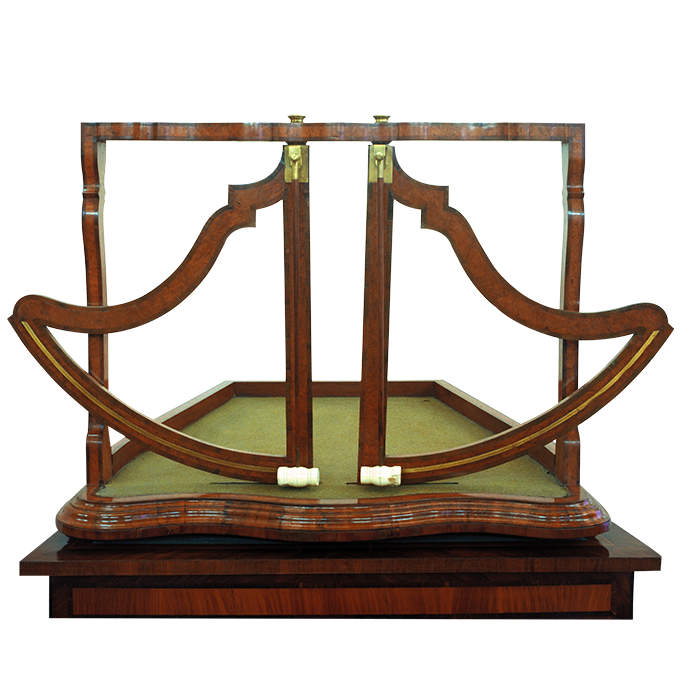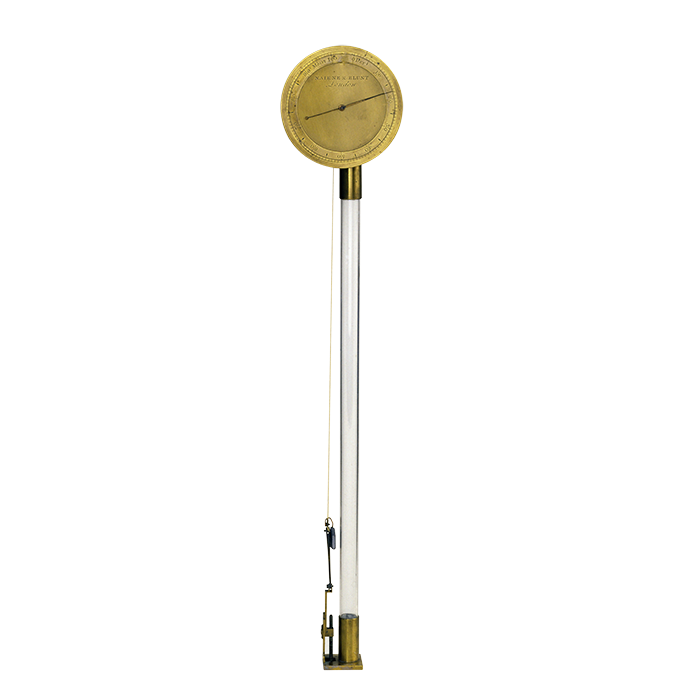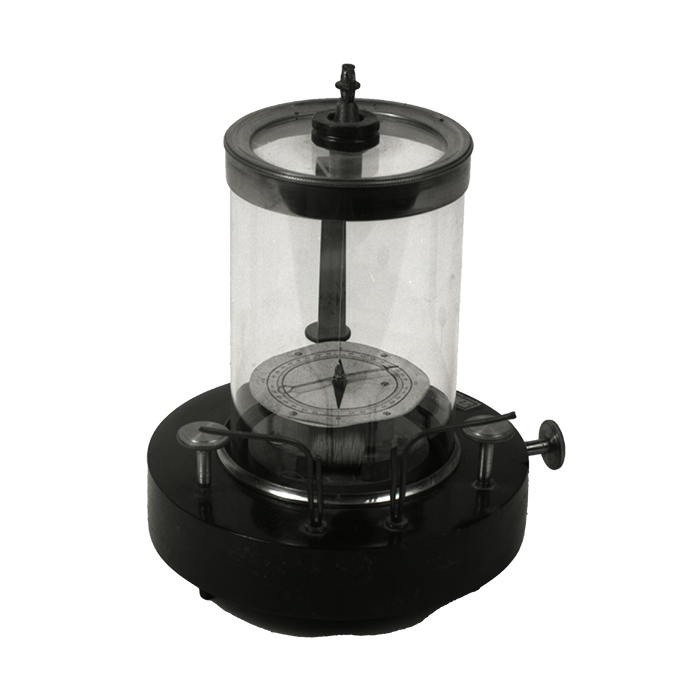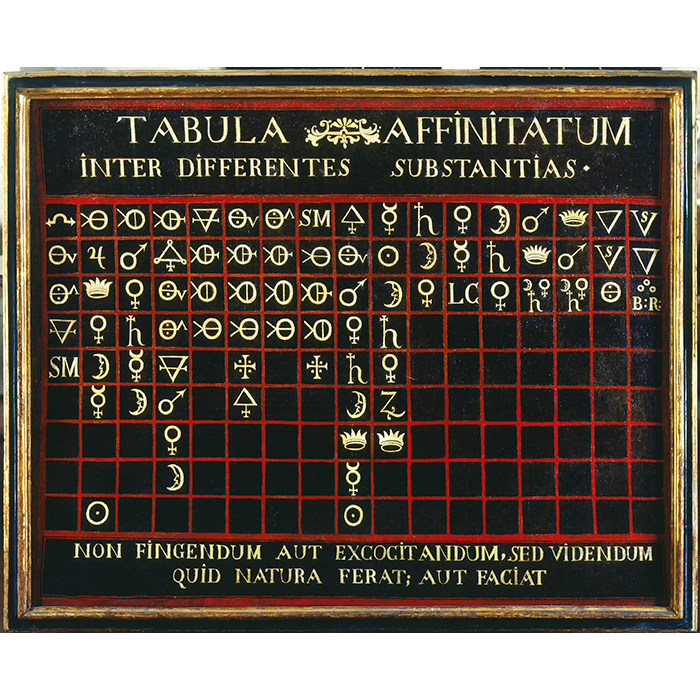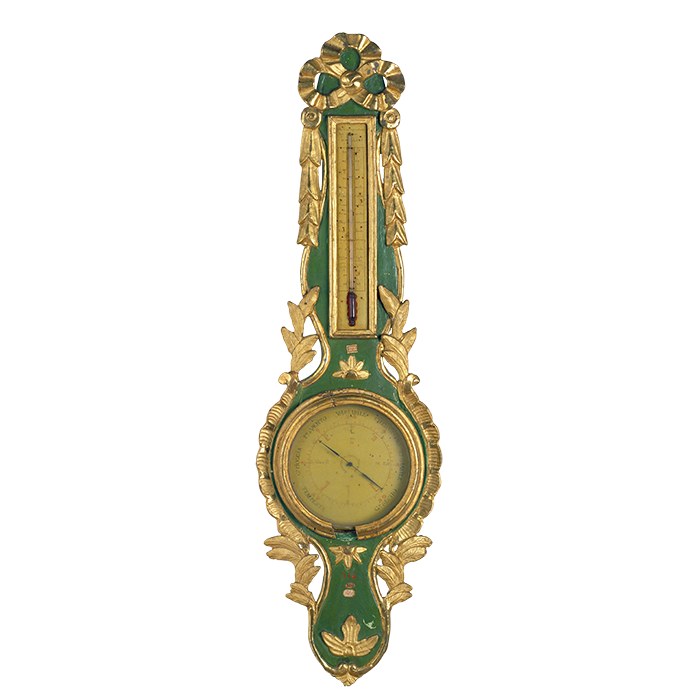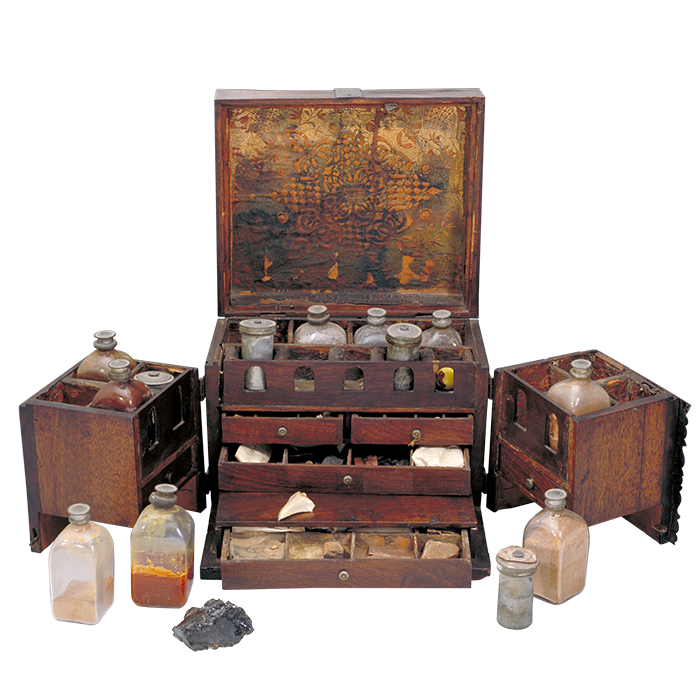Collections
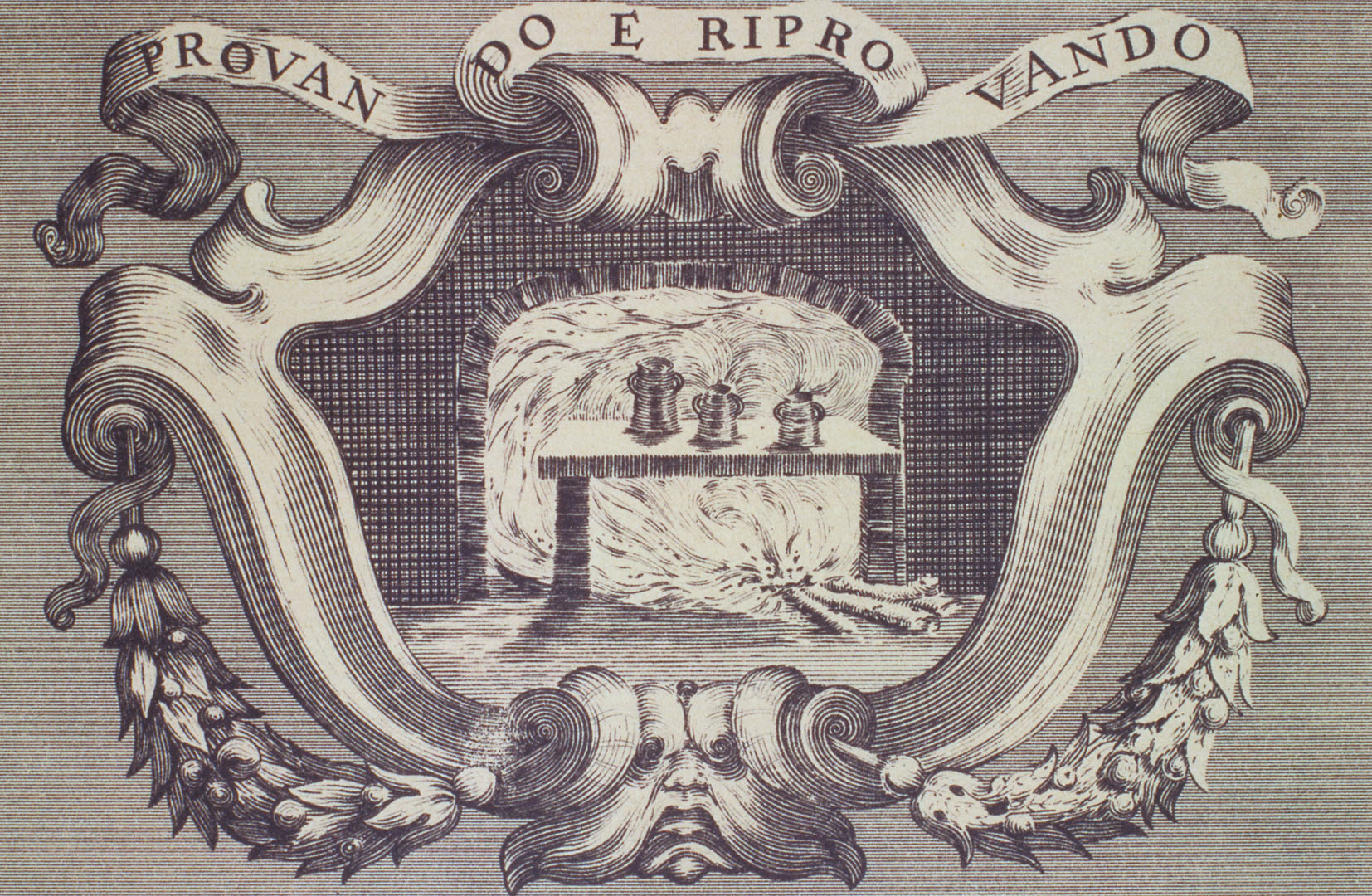
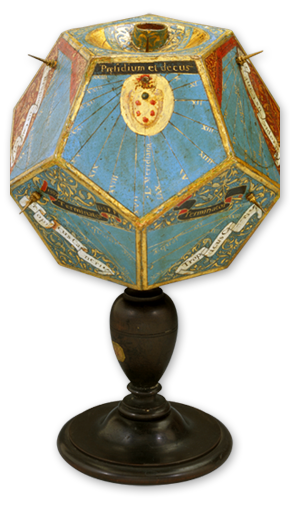
The Medici Collection
1562 - The Medici Wardrobe
The Medicean collection of scientific instruments was begun by Cosimo I (1519-1574), who housed it in the Wardrobe of Palazzo Vecchio, known today as the "sala delle carte geografiche" (Map Room). The room was decorated between 1563 and 1581 by Egnazio Danti and Stefano Buonsignori, who painted on the 57 doors of the wardrobes the geography of the known world. Against the end wall was the planetary clock by Lorenzo della Volpaia. According to the original project, two large globes, one terrestrial, the other celestial, were to hang from the ceiling.
1600 - Mathematics Room
In 1600 Ferdinando I (1549-1609) transferred the collection to a small room in the Uffizi Gallery which became known as the "stanzino delle matematiche". Giulio Parigi depicted on the ceiling the instruments in the collection. Here and on the adjoining terrace (which once housed the great armillary sphere built by Antonio Santucci in 1593) the instruments bequeathed by Robert Dudley and those purchased in Germany by Mattias de' Medici were displayed.
1657 - The Accademia del Cimento
With the foundation of the Accademia del Cimento (1657), inaugurated by Ferdinand II (1610-1670) and Leopold de' Medici (1617-1675) for the purpose of conducting the experimental investigation of nature, the collection was enriched with new instruments designed mainly for thermometric, barometric and pneumatic research. The Accademia was located in the Pitti Palace where all the instruments in the Medici collection were subsequently moved.
The Lorrain Collection
1775 - The Museum of Physics
In 1775 the instruments were moved from the Pitti Palace to the Royal Museum of Physics and Natural History in Palazzo Torrigiani on Via Romana, where the Specola Museum is located today. Grand Duke Peter Leopold Habsburg-Lorraine (1747-1792) appointed as director of the museum Abbot Felice Fontana, who built an observatory and upgraded the collection with new instruments of mathematics, physics, meteorology and electricity, many of which were constructed in the Museum workshops.
1829 - The Museum Workshops
After their decline during the French occupation (1799-1814), the museum and its workshops were reorganized upon the return to power of the Lorraine Family. Under the direction of Vincenzo Antinori, such outstanding astronomers and physicists as Giovanni Battista Amici, constructor of microscopes, telescopes, micrometers and spectroscopes, and Leopoldo Nobili, inventor of electromagnetic and galvanometric instruments and thermo-electric piles, contributed to the development of the Museum workshops.
1841 - The Tribune of Galileo
The Tribune was built in 1841 in the Museum of Physics, on the initiative of the Grand Duke Leopold II (1797-1870). The architect Giuseppe Martelli planned it to contain a statue of Galileo, surrounded by frescoes and bas-reliefs illustrating the discoveries and the most important instruments of the great scientist: the geometric and military compass, an armed loadstone, two telescopes, and the objective lens of the telescope with which Galileo discovered the Jupiter satellites. The Renaissance instruments and those of the Accademia del Cimento were also displayed in the Tribune.
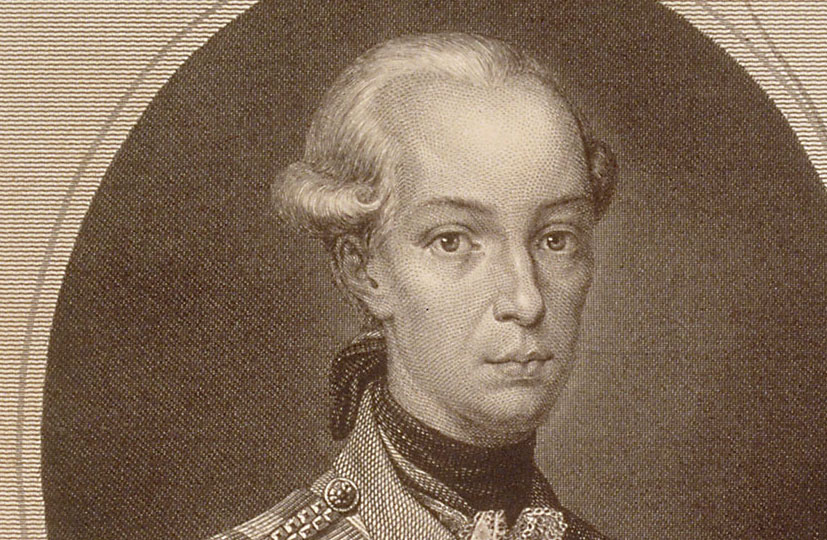
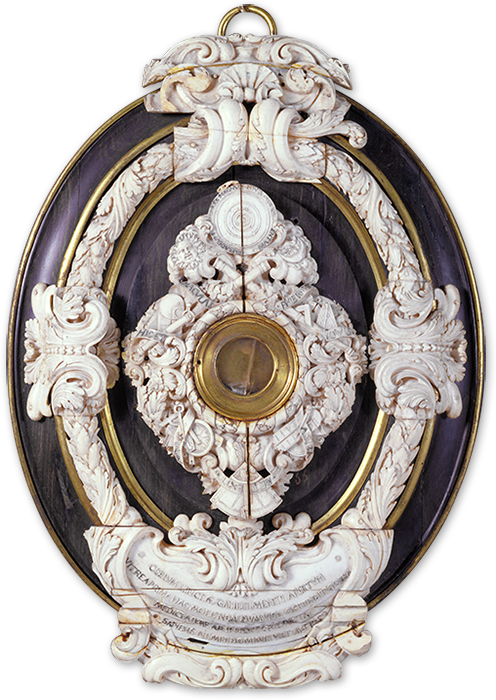

 EN
EN  IT
IT 